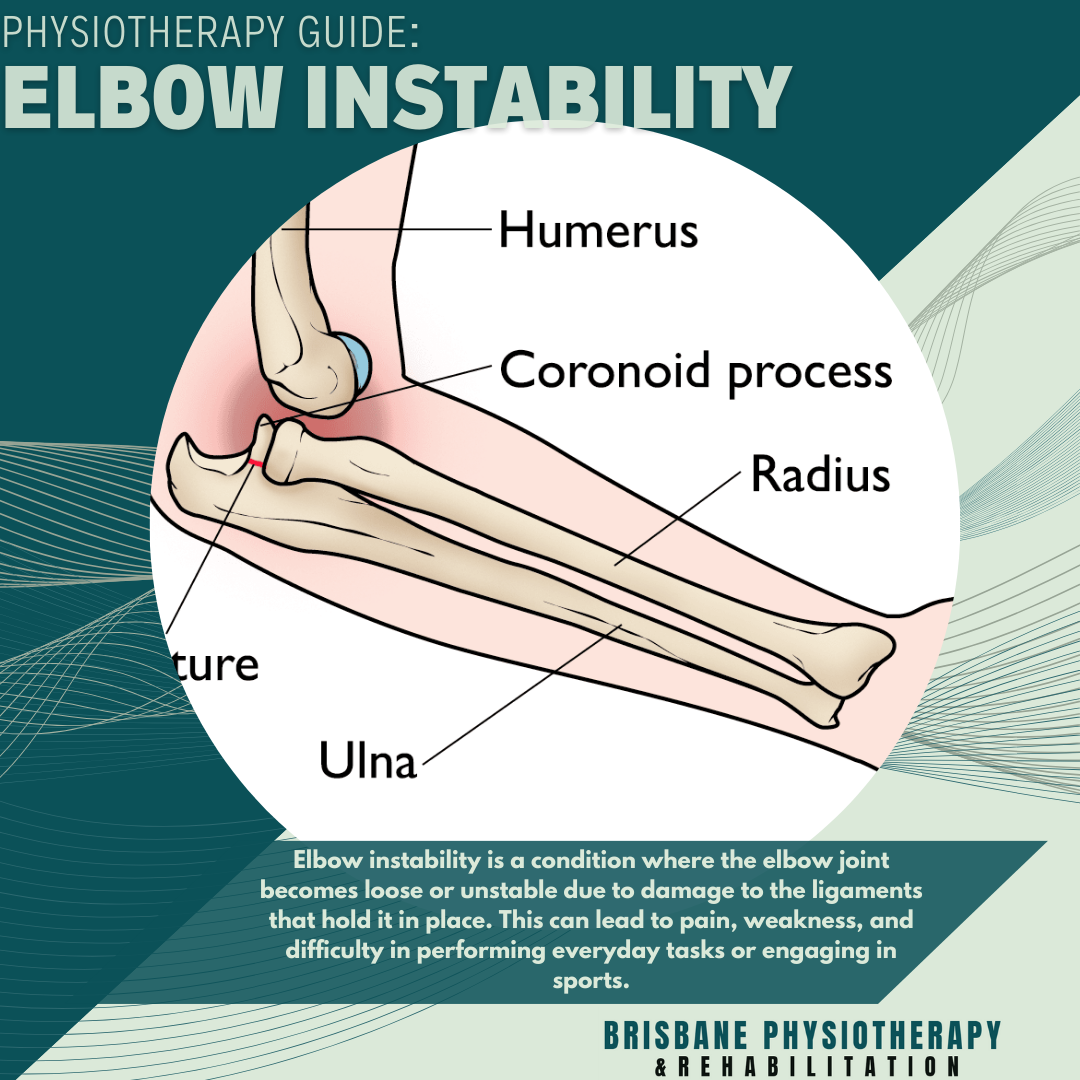Elbow Instability: Causes, Symptoms, and Physiotherapy for Recovery
Elbow instability is a condition where the elbow joint becomes loose or unstable due to damage to the ligaments that hold it in place. This can lead to pain, weakness, and difficulty in performing everyday tasks or engaging in sports. At Brisbane Physiotherapy, we see many patients with elbow instability, especially those involved in activities that place repetitive stress on their arms. Physiotherapy plays a crucial role in treating this condition and restoring stability to the elbow joint.
Causes of Elbow Instability
Elbow instability often results from damage to the ligaments surrounding the elbow, particularly the ulnar collateral ligament (UCL) or the lateral collateral ligament (LCL). Common causes include:
Trauma: A fall on an outstretched arm, a dislocated elbow, or a direct blow can result in ligament tears, leading to instability.
Repetitive Stress: Athletes such as tennis players, cricketers, and weightlifters are particularly prone to elbow instability. The repetitive nature of their movements places continuous stress on the ligaments, leading to gradual weakening or microtears.
Overuse Injuries: Jobs or activities that require frequent lifting or pushing can strain the ligaments over time, leading to instability.
Elbow Dislocation History: Previous elbow dislocations can stretch or tear the ligaments, making the joint more vulnerable to instability in the future.
Symptoms of Elbow Instability
The most common symptoms of elbow instability include:
Pain: Pain, particularly on the inside (medial) or outside (lateral) of the elbow, which worsens with activity, especially throwing or pushing.
Clicking or Popping: You may experience a sensation of catching, locking, or popping when you move your elbow, especially during twisting or throwing movements.
Weakness: The elbow may feel weak or give way during weight-bearing activities, such as pushing yourself up from a chair or lifting objects.
Physiotherapy for Elbow Instability
Physiotherapy is an essential part of managing elbow instability, whether the injury is treated conservatively or surgically. At Brisbane Physiotherapy, we create tailored treatment plans that focus on strengthening the muscles around the elbow, improving joint stability, and restoring normal movement patterns.
Strengthening Exercises: Strengthening the muscles around the elbow, forearm, and shoulder helps support the joint and compensate for any ligament damage. Specific exercises target the stabilising muscles to improve control and prevent further instability.
Range of Motion Exercises: Gentle stretching and mobility exercises help maintain the elbow’s full range of motion and prevent stiffness.
Proprioception Training: This involves exercises that enhance the body’s sense of joint position and movement, helping to stabilise the elbow during activity.
Manual Therapy: Hands-on techniques, such as soft tissue massage and joint mobilisation, are used to reduce pain, improve circulation, and promote healing.
Conclusion
Elbow instability can be a debilitating condition, especially for those who lead active lifestyles or participate in sports. However, with early diagnosis and a structured physiotherapy program, most patients can achieve full recovery and return to their normal activities. At Brisbane Physiotherapy, our experienced team is dedicated to helping you regain strength, stability, and confidence in your elbow movement.
